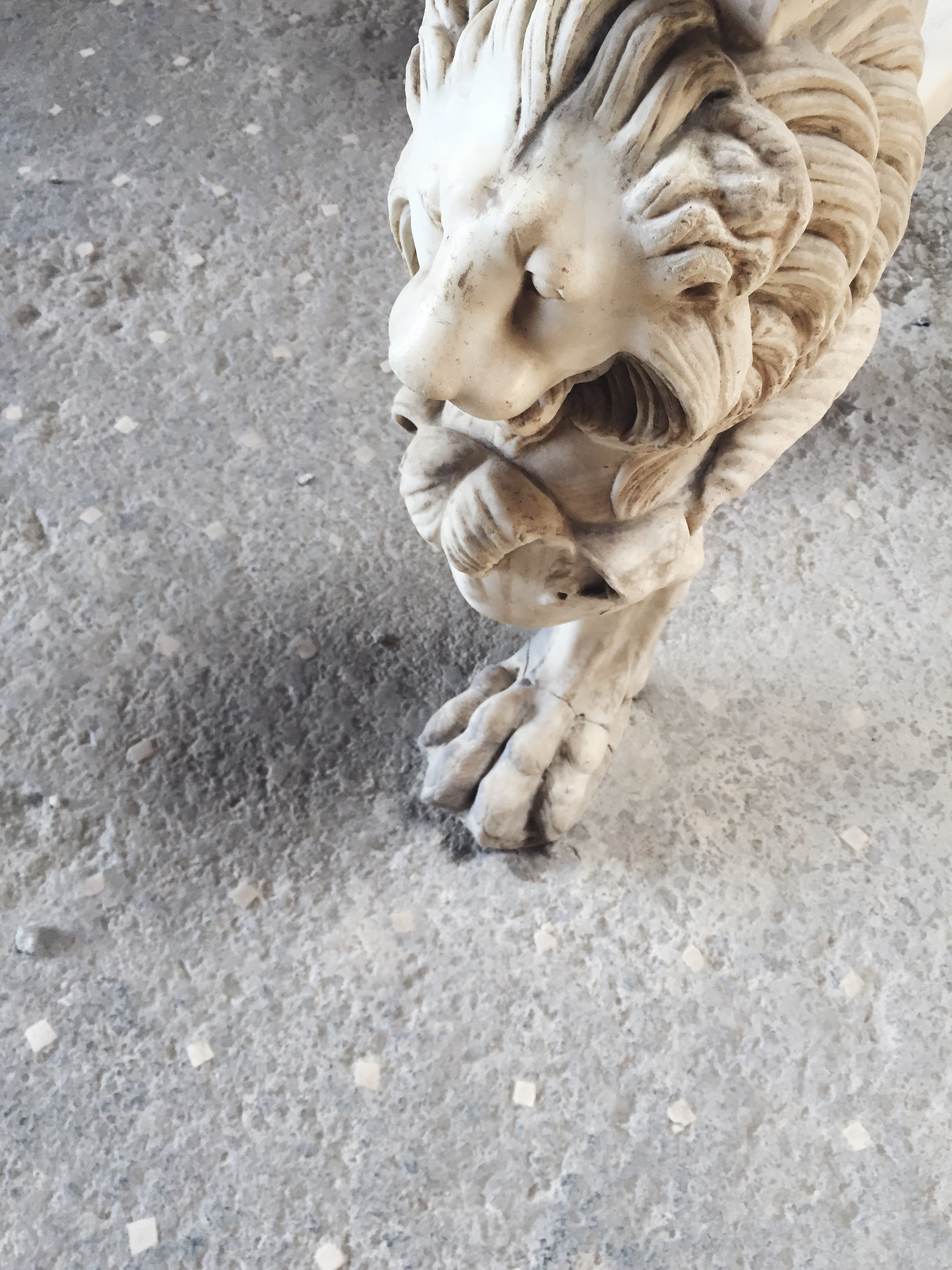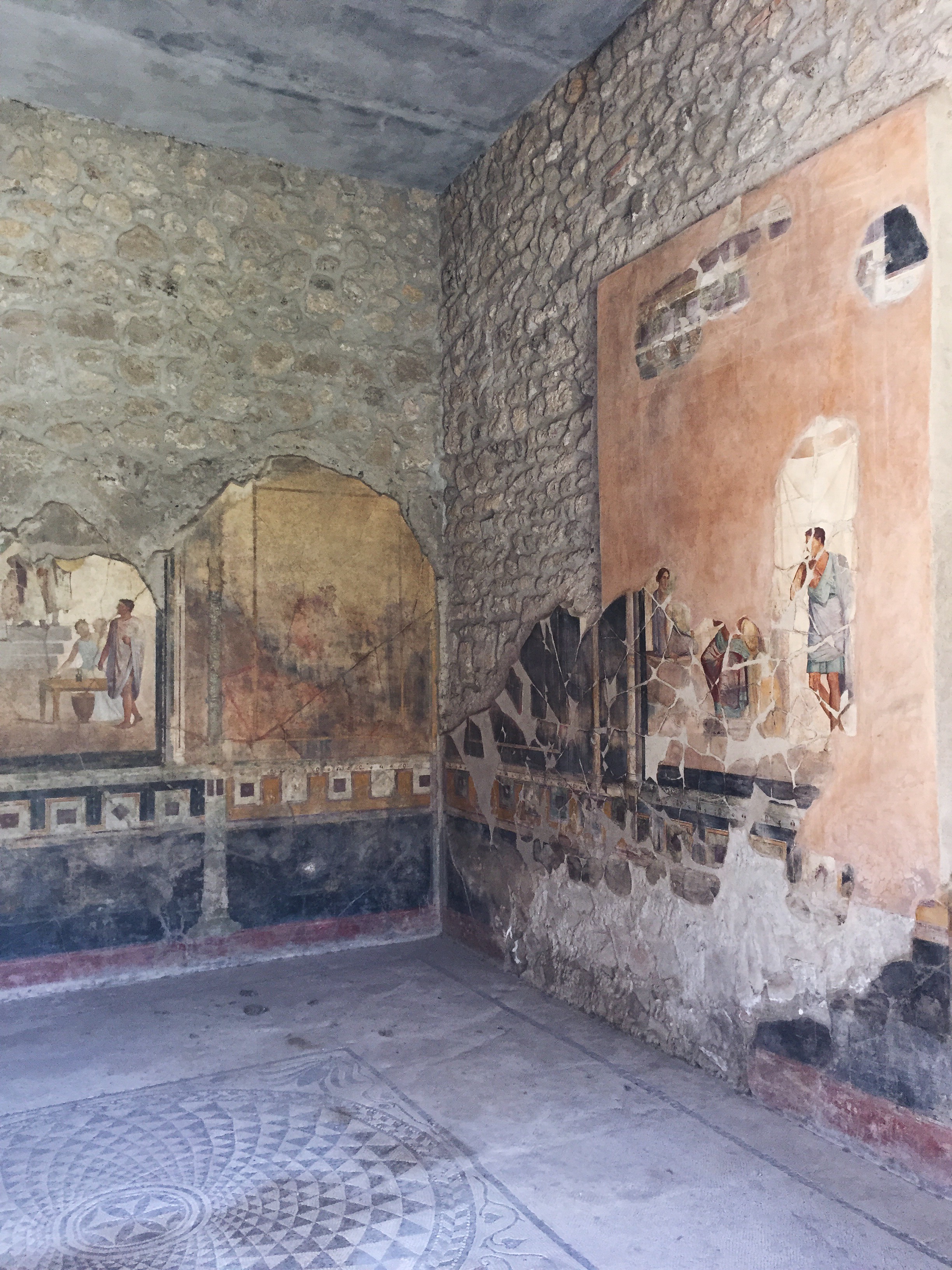After almost 24 hours en route, I arrived home in Los Angeles last night. Now begins the period of jet lag (definitely not my fave!) and of reflecting on the sights and experiences of the past two weeks in Italy (definitely my fave!). After two weeks abroad, I’ll need at least few days to parse out the highlights—so much to see, do, and eat!—but one thing that definitely stands out in my mind was the visit I took with my parents to the ruins of Pompeii. Not only was it fascinating from an historical point of view, but the architecture and interiors lover in me had a field day! The ruins provide a priceless glimpse into the beauty and traditions of Ancient Roman design—traditions that still influence the way we live and decorate today. For anyone who geeks out like I do on details like color palettes and surface treatments, Pompeii and other nearby archeological sites are a must see!

The magnificence of the frescoes, mosaics, porticoes, and gardens is thrilling indeed. Revel in the faded aquas, siennas, and carmines of the murals that adorn the interior walls; the intricacy of minuscule tiles that create dynamic scenes on the floors; the elegance of scale and proportion that defines each space. Delight in details that we can relate to even now: cubbies for clothing in the locker rooms of the public baths, marble countertops at the short-order restaurants that served takeout meals, and best of all, an entryway with the Latin words for “Beware of Dog” installed on the threshold. History can so often feel distant and irrelevant, but Pompeii’s perfectly preserved glimpse at how common people lived 2000 years ago personalizes history in the most stylish of ways.
Not far from Pompeii itself are the ruins of a settlement called Herculaneum, and it’s equally memorable in its design. In fact, if you have limited time or a short attention span—admittedly Pompeii is huge and somewhat overwhelming—then visit Herculaneum over Pompeii to get the most bang for your buck! It’s smaller, has fewer crowds, and the volcanic blast that hit the area in 79 AD preserved the town in a way that more vividly illustrates certain aspects of Roman design. At Pompeii, a shower of hot ash incinerated everything it touched; while at Herculaneum, a thick blanket of mud froze the town in time and preserved it for the next two millennia, leaving intact artifacts as precious as multiple story buildings, furniture, and even sliding wood doors!
If you’re headed to Italy and planning a trip to Pompeii, I definitely recommend doing a bit of research beforehand. That way you’ll better be able to appreciate everything you encounter. But even going in unprepared (as I did) is a treat, and it’s sure to leave you with a new level of awe and admiration for all that we humans create to leave our mark on the world! Prep for your trip to Pompeii and Herculaneum at the Italian government’s official Pompeii ruins page, which includes information on getting to the sites, hours of accessibility, and advance ticket purchases. Truly an item to cross off your design lover’s bucket list!


